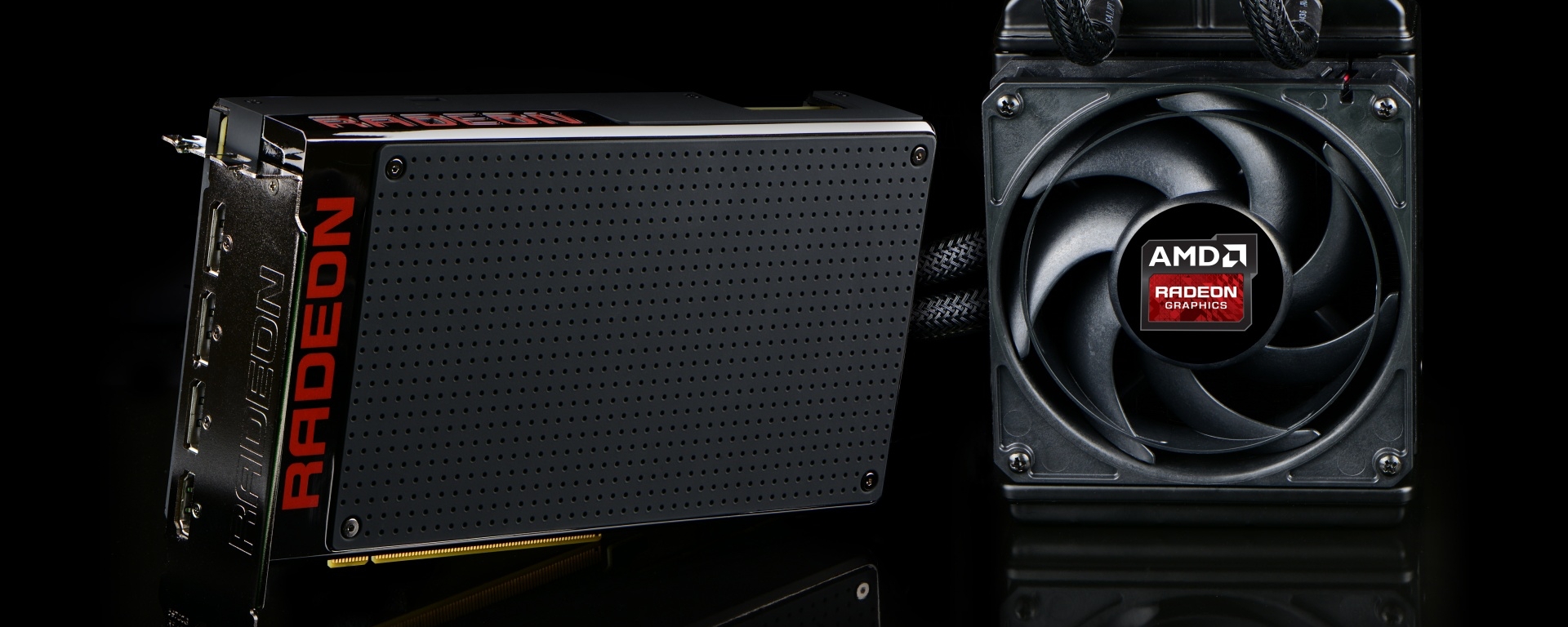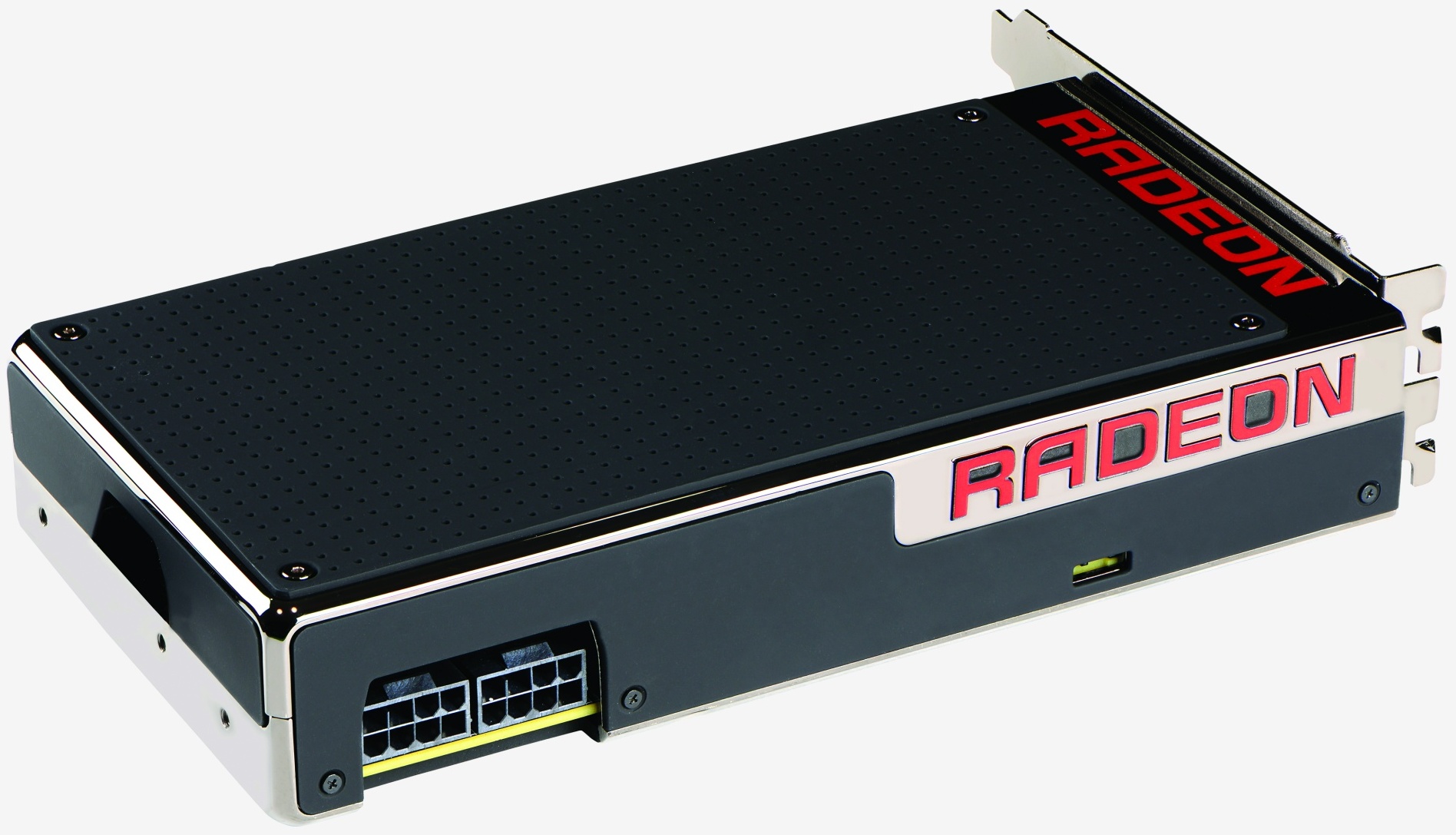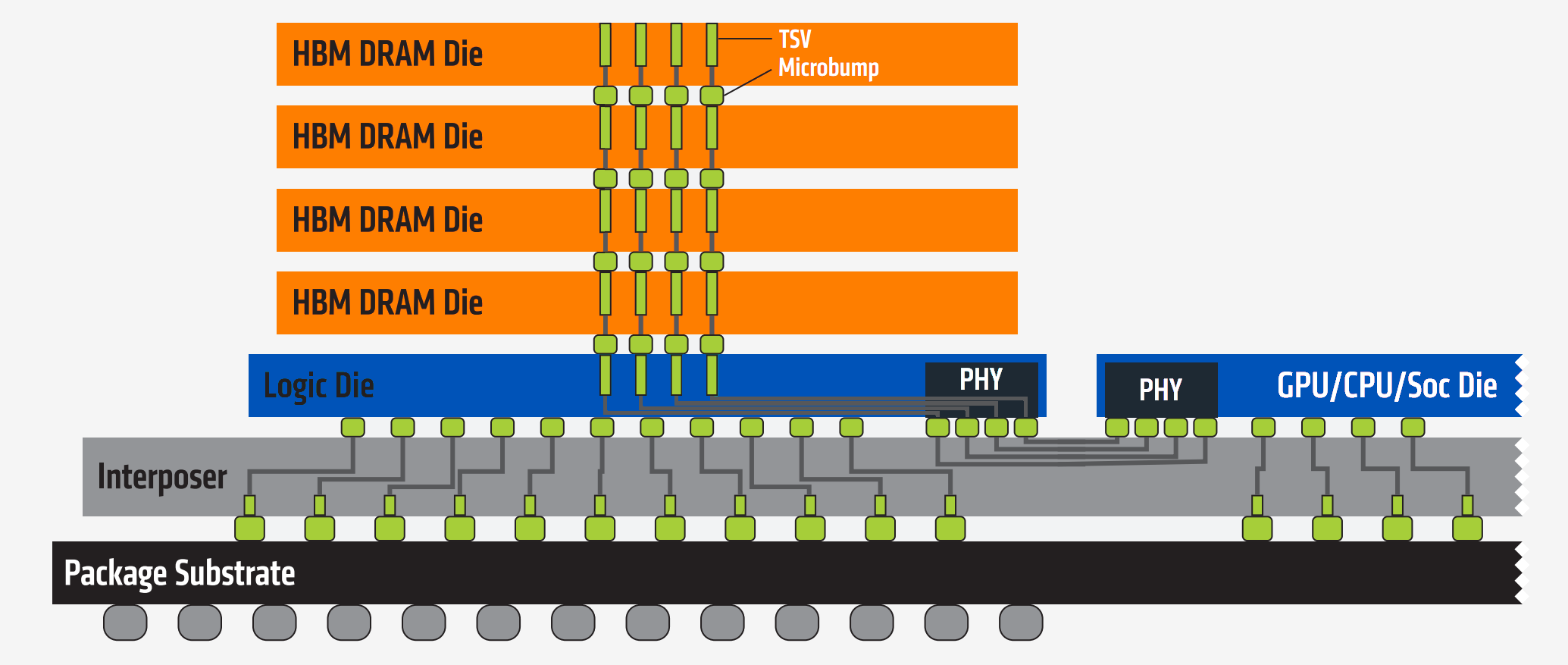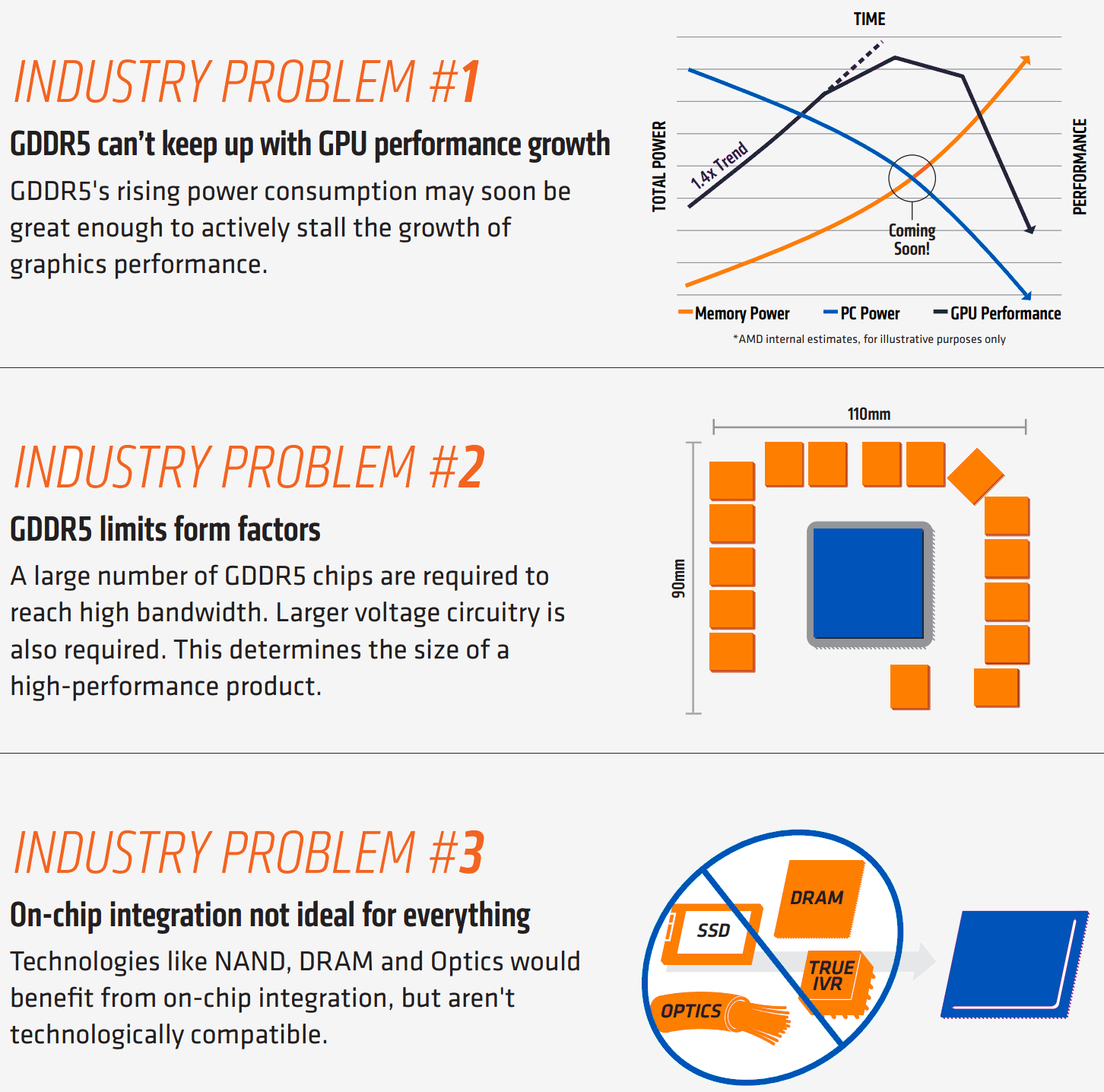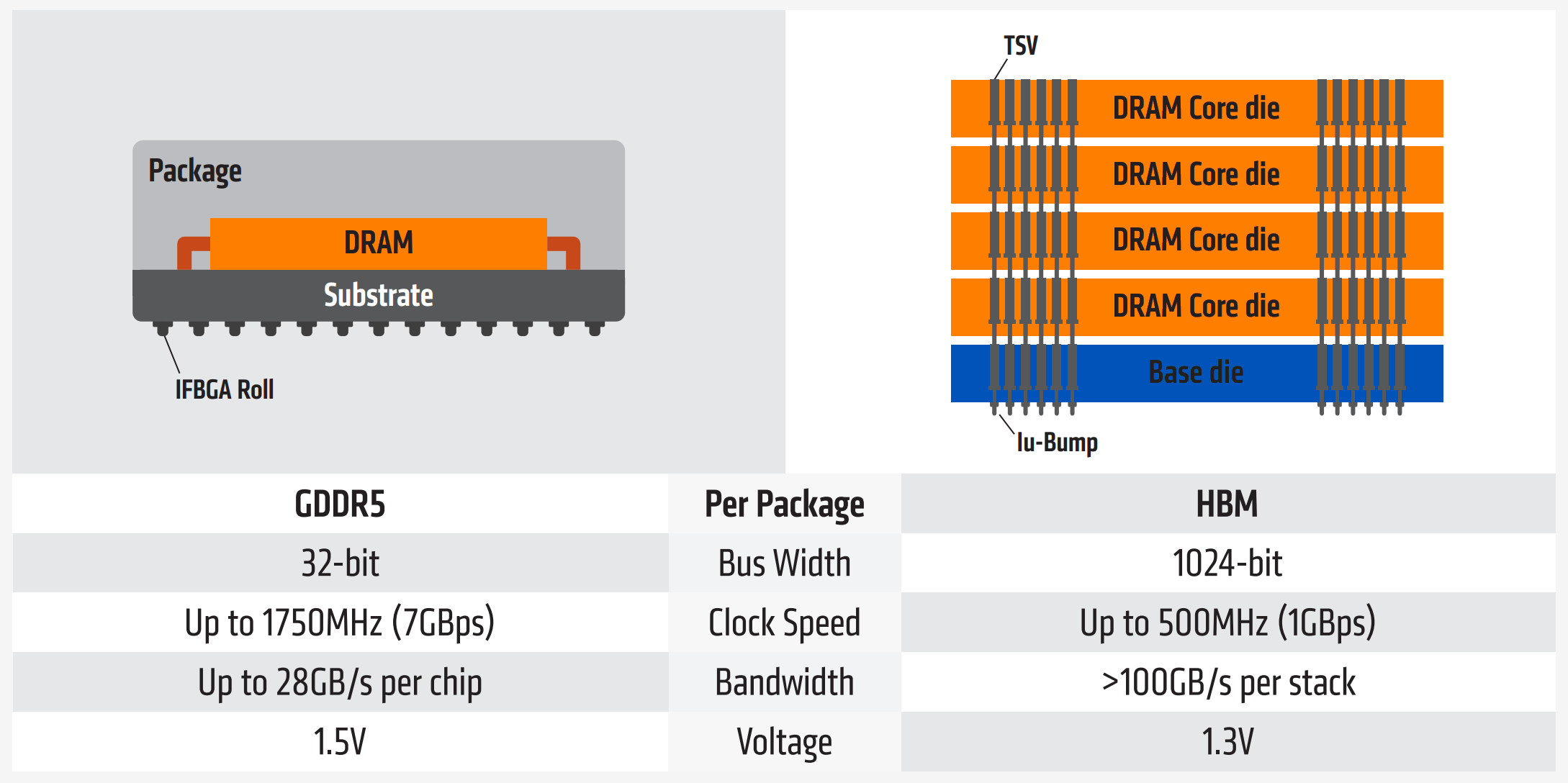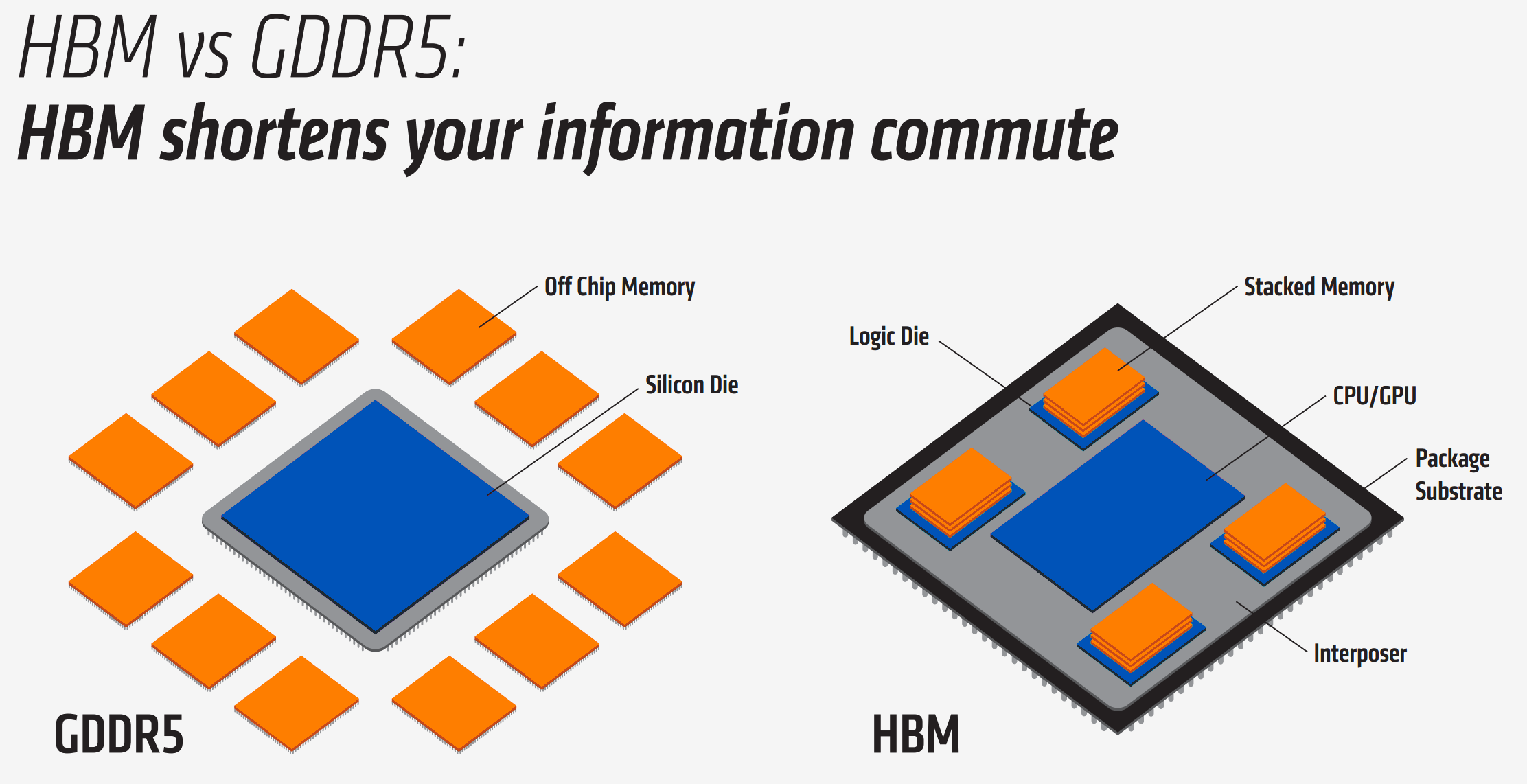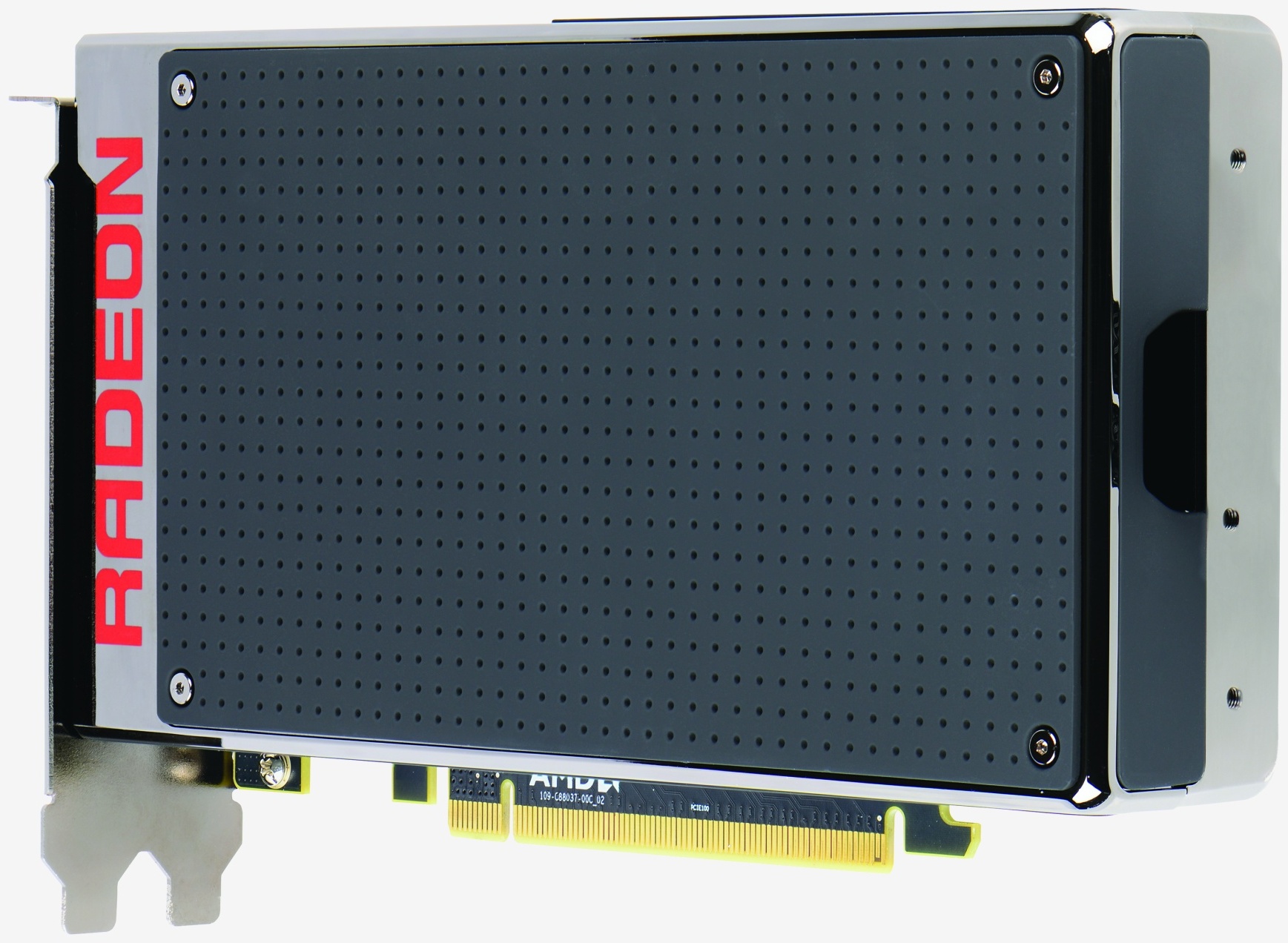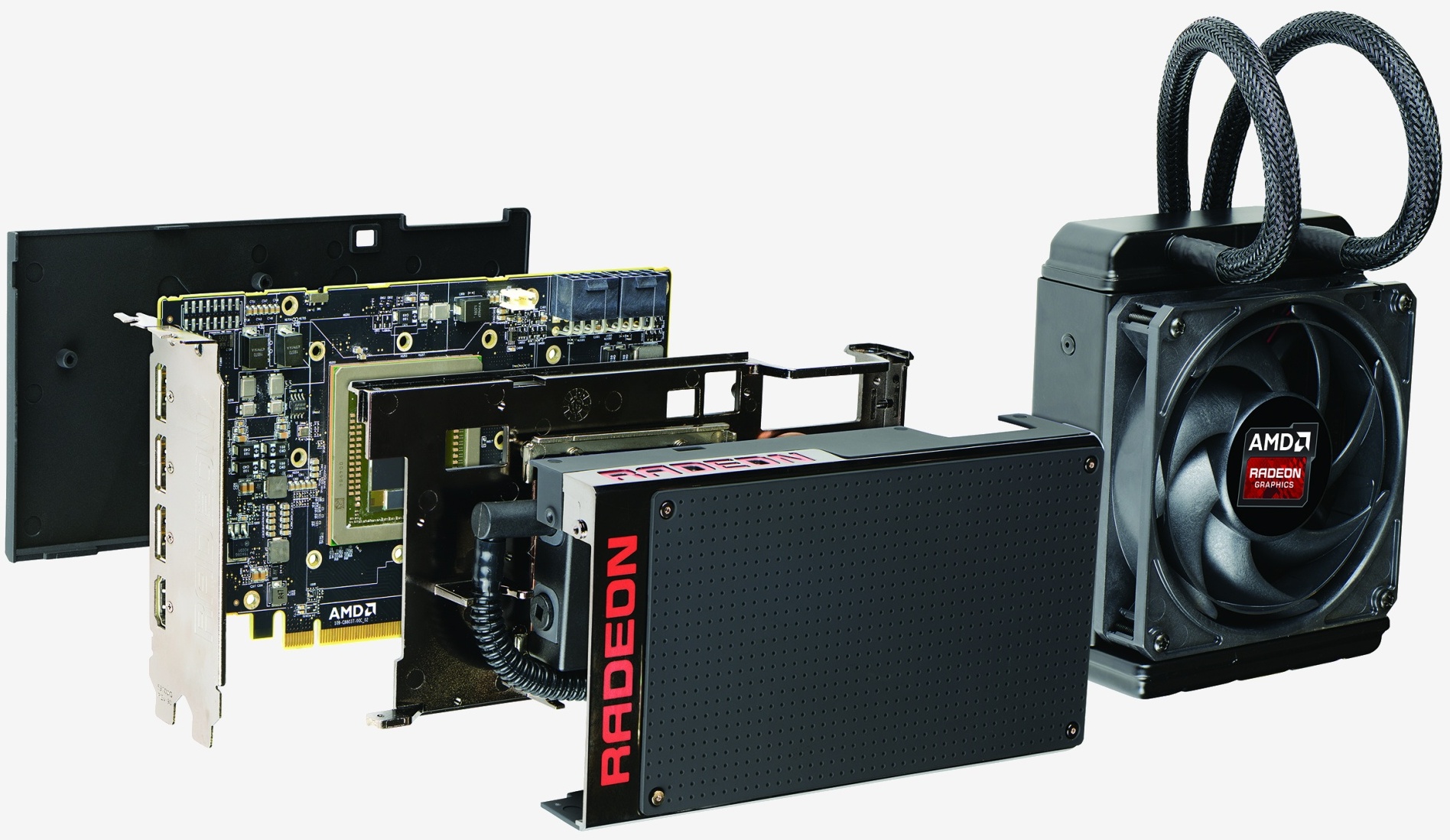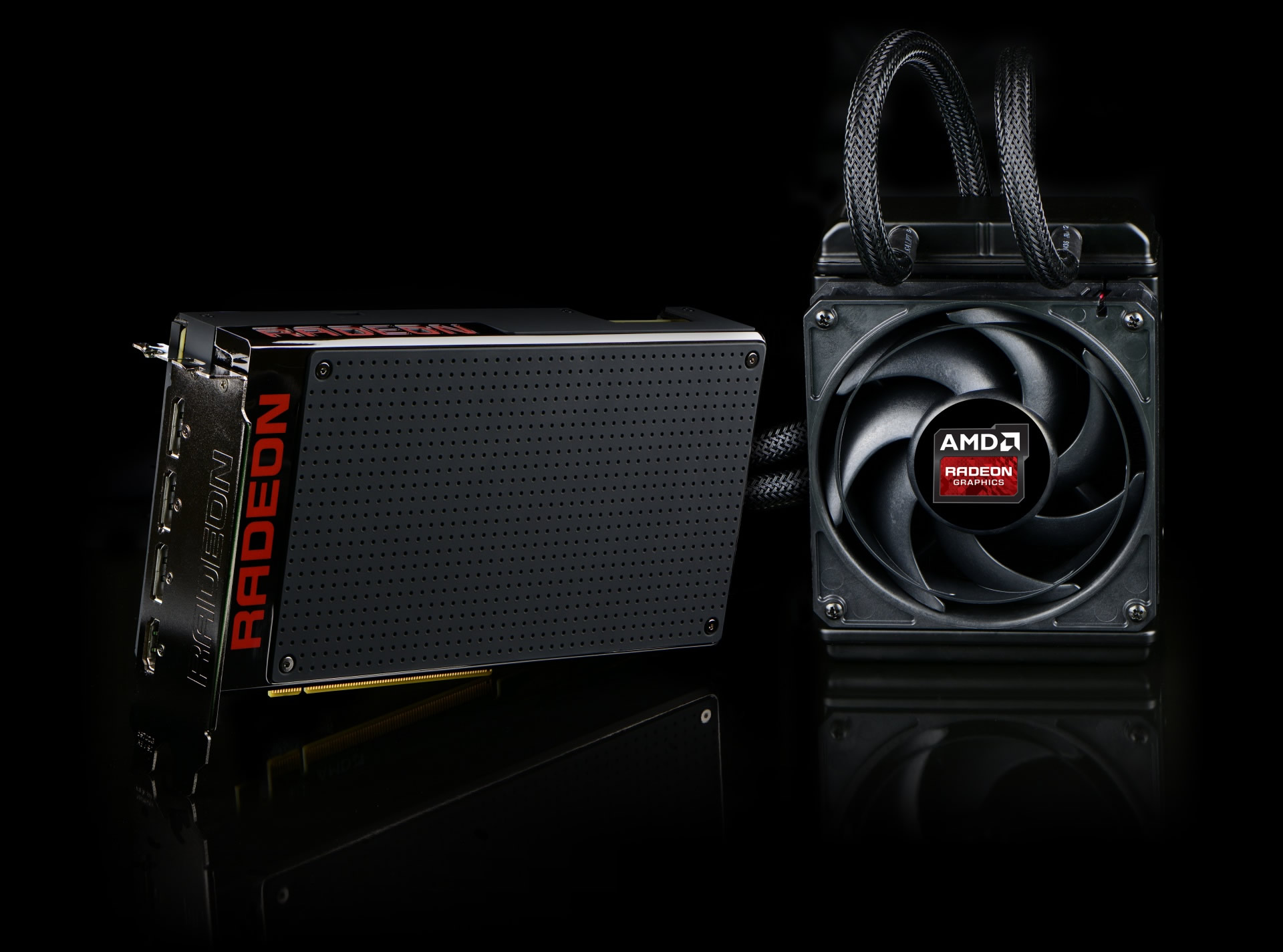On the heels of delivering its latest round of rebadges with the Radeon 300 series, AMD has launched what may be its most hyped product of 2015. Whereas the recent R9 390X/390 were architecturally identical to the R9 290X/290 in every conceivable way, the R9 Fury X (codenamed 'Fiji XT') employs the GCN 1.2 architecture as the R9 380 but doubles the SPU count, which also amounts to 45% more SPUs than you'll find in the R9 390X.
Along with packing an impressive core specification, the Fury X touts an incredible memory bandwidth of 512GB/s, which is 33% faster than that of the R9 390X and 60% higher than the R9 290X. That's a huge leap on what was already a fast memory subsystem using high-speed GDDR5 6Gbps memory.
HBM is an exciting new memory technology that will allow AMD to develop some truly innovative GPUs, and the Fury X should be only the beginning.
| Radeon R9 Fury X | Radeon R9 390X | Radeon R9 390 | |
| Process | 28nm | 28nm | 28nm |
| Stream Processors | 4096 | 2816 | 2560 |
| Core Clock | 1050MHz | 1050MHz | 1000MHz |
| Compute Performance | 8.6 TFLOPs | 5.9 TFLOPs | 5.1 TFLOPs |
| Texture Units | 256 | 176 | 160 |
| Texture Fill-Rate | 268.8 GT/s | 184.8 GT/s | 160.0 GT/s |
| ROPs | 64 | 64 | 64 |
| Pixel Fill-Rate | 67.2 GP/s | 67.2 GP/s | 64.0 GP/s |
| Z/Stencil | 256 | 256 | 256 |
| Memory Configuration | 4GB HBM | 8GB GDDR5 | 8GB GDDR5 |
| Memory Interface | 4096-bit | 512-bit | 512-bit |
| Memory Speed / Data Rate | 500MHz / 1.0Gpbs | 1500MHz / 6.0Gpbs | 1500MHz / 6.0Gpbs |
| Memory Bandwidth | 512GB/s | 384GB/s | 384GB/s |
| Power Connectors | 2 x 8-pin | 1 x 8-pin/6-pin | 1 x 8-pin/6-pin |
| Typical Board Power | 275 watt | 275 watt | 275 watt |
| PCIe Standard | PCIe 3.0 | PCIe 3.0 | PCIe 3.0 |
| API Support | DirectX 12, Vulkan, Mantle | DirectX 12, Vulkan, Mantle | DirectX 12, Vulkan, Mantle |
| FreeSync Support | Yes | Yes | Yes |
| Virtual Super Resolutions | Yes | Yes | Yes |
| Frame Rate Targeting Control | Yes | Yes | Yes |
Enabling this massive memory bandwidth is High Bandwidth Memory (HBM) memory, a new high-performance memory standard that uses vertically stacked DRAM dies and fast microscopic interconnects called through-silicon vias (TSVs). The three-dimensional die stacking and tiny interconnects allows for superior bandwidth at lesser power consumption than both GDDR5 and DDR4.
HBM is a superior technology to GDDR5 by almost every memory metric, offering more bandwidth while using less power and 19x less surface area than GDDR5.
Although the Radeon 300 series brought a performance boost and helped strengthen AMD's position in the high-end market, the R9 390X couldn't top the GTX 980 much less the 980 Ti or Titan X. We expect the Fury X to put up more of a fight against Nvidia's flagship.
We're also interested to see how the card's pricing checks out. AMD wasn't particularly aggressive with pricing on the 300 series, charging $100 more for the 390X than the 290X, which can be overclocked to rival the 390X's performance. For the Fury X, AMD has matched the GTX 980 Ti's $650 MSRP out of the gate and that price includes a liquid cooler.
The Fury X in Detail
The R9 Fury X core is comprised of an incredible 8.9 billion transistors and because the 28nm process is still being used, the die measures a massive 596mm2. That said, if you include the 4GB of HBM then the die area measures 1011mm2. All told, the Fury X has 44% more transistors than the 390X while the die is 36% larger.
In total, the Fury X core features 4096 SPUs, 256 TAUs and 64 ROPs, 45% more SPU and TAUs than the 390X with the same amount of ROPs. The core is clocked at up to 1050MHz, which is the same frequency as the 390X.
As noted earlier, the HBM is clocked at just 500MHz (1.0Gbps) which is obviously much lower than the GDDR5 memory of the 390X. However keep in mind that HBM memory features a bus width of 1024-bits per stack versus 32-bits of a GDDR5 memory chip. This means even at much lower clock speeds the wider bus allows HBM to deliver over 100GB/s per stack compared to 28GB/s per GDDR5 chip.
This means HBM comes at a cost of a little over 35GB/s per watt while GDDR5 offers just 10.6GB/s per watt.
For now the key downside is the 4GB capacity limitation, which could potentially become a problem at ultra-high resolutions. However, AMD says those situations won't matter much because the games most likely won't be playable at those settings anyway. We tend to agree.
Apart from the obvious performance advantages and power savings, another key advantage to HBM technology is saving space as the DRAM dies are stacked on top of each other. For example 1GB of GDDR5 memory (comprised of four 256MB chips) requires roughly 672mm2 of space and using HBM technology that same 1GB needs only about 35mm2.
According to AMD, 9900mm2 of PCB is required for the 290X GPU and its associated memory whereas less than 4900mm2 is used for the Fury X.
This then brings us to the Fury X board design which, like HBM, is unique in itself. Never before have we seen an ultra-high-end graphics card that measures less than 10" in length and the Fury X is well under this at just 7.5".
Of course while the PCB is compact, the cooling isn't. Dissipating at least 275 watts of power needs a serious cooler and instead of equipping a 13" long heatsink and fan combo, AMD looked to the R9 295X2 for inspiration.
To maintain its 7.5" PCB the Fury X is equipped with a water-block on the GPU alongside an external 120mm radiator.
Not so long ago liquid-cooling was a niche industry, but with so many enthusiasts now opting to use closed-loop liquid cooling for their CPU, it is almost becoming the norm. AMD says that with the R9 295X2 it was "proud to bring the first closed loop liquid cooling solution to a reference graphics card." That might be true but it also had little choice in the matter, as air-cooling simply wouldn't suffice, at least not at a tolerable operating volume.
The R9 Fury X improves on that design by fully liquid cooling all essential components (ASIC, VRM, DRAM) in a single loop to the 120mm radiator. Using a single high quality 120mm Nidec fan on the radiator, the GPU temperature should remain in the 50°C range in typical gaming scenarios and the noise from the fan ought to be lower than 32dBA.
Back on the graphics card we find a shroud covering the entire PCB that uses multiple pieces of aluminum die cast, finished in black nickel mirror gloss and a black soft touch material.
The front plate of the R9 Fury X is removable via four hex screws, revealing the components located beneath the shroud. This unique removable plate leaves options for users to potentially 3D print or CNC an alternative plate to customize the look of the graphics card.
Like the R9 295X2, the Fury X also features a red glowing Radeon logo across the top of the graphics card when powered on.
In addition to the glowing logo, the Fury X features AMD's new GPU Tach LEDs. There are eight LEDs located above the PCIe power connectors that indicate GPU utilization. For example, during a gaming session all eight LEDs should be lit and while idling on the desktop a single LED will typically be lit. These eight LEDs are user configurable to either red and/or blue by the physical dipswitch located on the back side of the graphics card.
There is also a single green LED that indicates when the graphics card is in ZeroCore Power operation.
